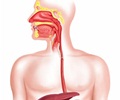
‘Introducing screening programs for severe combined immunodeficiency disease (SCID) for newborns may have the potential to save lives and prevent the suffering of patients and families affected by this condition.’
Tweet it Now
The death rate for severe combined immunodeficiency disease is at least 30 spercent, with infection causing 60 percent of deaths in infants.Ontario was the first jurisdiction in Canada to offer screening for severe combined immunodeficiency disease in 2013 as part of the heel prick test performed soon after birth. Screening has been expanded to the Maritime provinces and will be implemented in several other provinces.
"This review informs physicians who may treat newborns in their practice (e.g., family physicians, obstetricians, pediatricians) on how to approach patients and counsel families who are faced with an abnormal screen," writes Dr. Stuart Turvey, a professor with the UBC Department of Pediatrics and an investigator, BC Children's Hospital, Vancouver, BC, with coauthors.
The review includes features to watch for in newborns with repeated illnesses, information on screening and diagnosis, and treatments for the disease, as well as the approach and support for parents of babies who may receive a positive screen, including false positives.
"The opportunity to identify severe combined immunodeficiency early in life has transformed outcomes for this otherwise fatal condition. Introducing this assay into newborn screening programs throughout Canada has the potential to save lives and prevent suffering of patients and families affected by this condition," the authors conclude.
Advertisement
Source-Eurekalert










